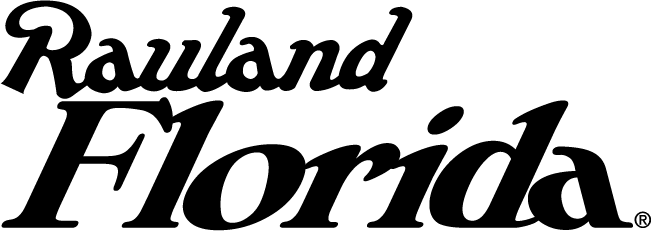Our History of Innovation
Rauland has its roots in the founding in 1929 of the Rauland Company by inventor and radio enthusiast E. Norman Rauland. In 1924, he became a pioneer in the radio broadcast industry by launching his own, Chicago-based radio station, WENR. Throughout the Depression, Rauland manufactured power amplifiers and equipment for public address systems. During this time, the Rauland Company won government contracts to produce radio and communication systems for the military.
In 1941 Norm Rauland and George Borg entered a partnership that would change the history of the company forever. The Rauland Corporation acquired the Webster-Chicago Corporation, a leader in school communications, and Rauland became firmly established as the dominant supplier of internal school communications systems.
In 1942, the Rauland Corporation acquired Baird Television of America. Rauland began developing the cathode ray tube (CRT), and as a result, the company became an important supplier of communications and radar equipment during WWII. After WWII, the Rauland Corporation began manufacturing CRTs for 10 and 12 inch televisions.
In 1948, two major events happened. First, Zenith Radio Corporation purchased the Rauland Corporation to acquire the CRT business. Second, Norm Rauland and George Borg started a new company, Rauland-Borg Corporation, for continuing the sound and communications business. As the company further developed its commercial and industrial communications components, they remained an important military contractor providing such essential products as the Navy's ship-to-shore radios, airborne radar jamming transmitters, walkie-talkies, classified cryptographic switching adapters, tank radios, intercom systems and radios for arctic regions.
In the early 1960s, the use of transistors was still limited but Rauland-Borg demonstrated its technological leadership by transforming its entire line of sound and communications products to transistorized and solid state components. Recognizing the need to keep school instructors and staff in touch with each other, Rauland-Borg introduced the first generation of Telecenter® products in 1968. Telecenter® was the first-ever commercial application of touch-tone technology which has since become the backbone of school communications, worldwide.
In 1979, after the acquisition of the Picker-Briggs Company, the prestigious manufacturer of the Responder® health care communications systems, Rauland-Borg established itself as a leader in nurse call communications.
In 1989, Rauland-Borg acquired Biamp Systems Company, a long-time designer and manufacturer of Biamp® professional audio equipment. In the 90s, the company expanded its existing product lines into Latin America and the Pacific Rim.
In 2017, Rauland was acquired by AMETEK Inc., a leading global manufacturer of electronic instruments and electromechanical devices with manufacturing, sales and service locations across the United States and other countries throughout the world.
Today, we respond to market needs worldwide with two distinct critical communication system product lines: Responder®, designed for the healthcare industry, and Telecenter® systems, serving the educational market. Both product lines reflect our long-standing commitment to the cutting edge of communication innovation, and help ensure that we always have a solution that delivers on our customers' needs and initiatives.
In 1941 Norm Rauland and George Borg entered a partnership that would change the history of the company forever. The Rauland Corporation acquired the Webster-Chicago Corporation, a leader in school communications, and Rauland became firmly established as the dominant supplier of internal school communications systems.
In 1942, the Rauland Corporation acquired Baird Television of America. Rauland began developing the cathode ray tube (CRT), and as a result, the company became an important supplier of communications and radar equipment during WWII. After WWII, the Rauland Corporation began manufacturing CRTs for 10 and 12 inch televisions.
In 1948, two major events happened. First, Zenith Radio Corporation purchased the Rauland Corporation to acquire the CRT business. Second, Norm Rauland and George Borg started a new company, Rauland-Borg Corporation, for continuing the sound and communications business. As the company further developed its commercial and industrial communications components, they remained an important military contractor providing such essential products as the Navy's ship-to-shore radios, airborne radar jamming transmitters, walkie-talkies, classified cryptographic switching adapters, tank radios, intercom systems and radios for arctic regions.
In the early 1960s, the use of transistors was still limited but Rauland-Borg demonstrated its technological leadership by transforming its entire line of sound and communications products to transistorized and solid state components. Recognizing the need to keep school instructors and staff in touch with each other, Rauland-Borg introduced the first generation of Telecenter® products in 1968. Telecenter® was the first-ever commercial application of touch-tone technology which has since become the backbone of school communications, worldwide.
In 1979, after the acquisition of the Picker-Briggs Company, the prestigious manufacturer of the Responder® health care communications systems, Rauland-Borg established itself as a leader in nurse call communications.
In 1989, Rauland-Borg acquired Biamp Systems Company, a long-time designer and manufacturer of Biamp® professional audio equipment. In the 90s, the company expanded its existing product lines into Latin America and the Pacific Rim.
In 2017, Rauland was acquired by AMETEK Inc., a leading global manufacturer of electronic instruments and electromechanical devices with manufacturing, sales and service locations across the United States and other countries throughout the world.
Today, we respond to market needs worldwide with two distinct critical communication system product lines: Responder®, designed for the healthcare industry, and Telecenter® systems, serving the educational market. Both product lines reflect our long-standing commitment to the cutting edge of communication innovation, and help ensure that we always have a solution that delivers on our customers' needs and initiatives.
Rauland: Evolutionary Solutions for Today and Tomorrow







